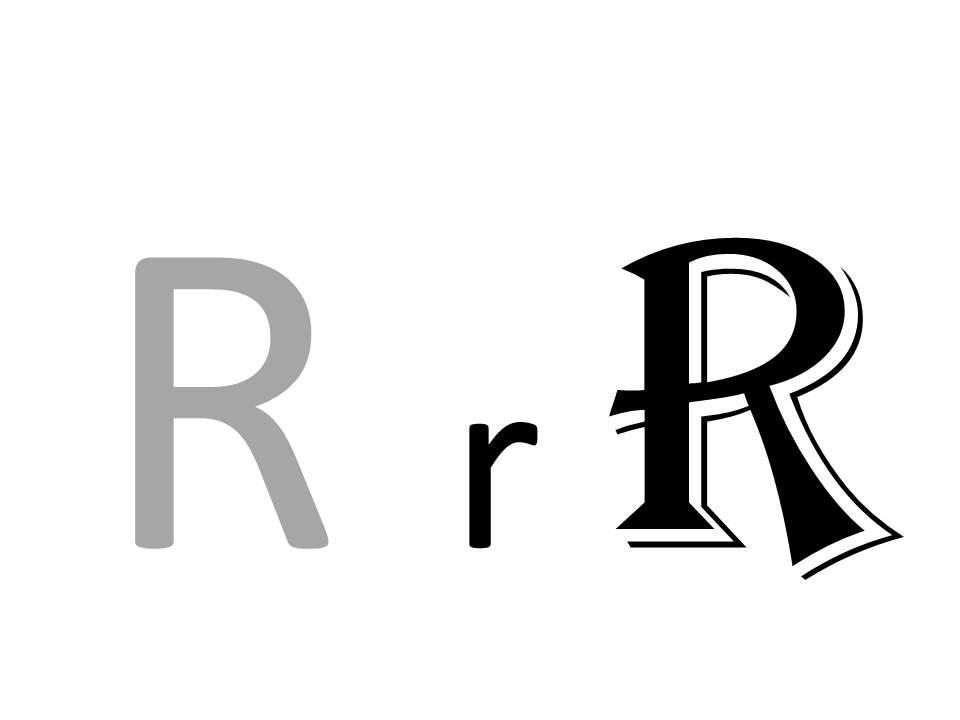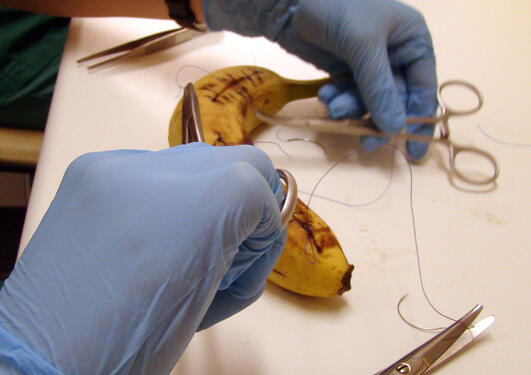3R - Replacement, Reduction and Refinement of animal experiments
What are the 3Rs? How shall I relate to them in the application for animal experimentation?
Main content
In the application for animal research, you have to document how you have assessed the 3Rs
3R
A short introduktion to the 3rs is availble here
More details follow below
Replacement
Anyone who applies to do experiments involving animals in research, testing or education must document that there are no alternatives to use of animals.
An important control-question to ask yourself is:
Have there been any developments in your scientific field (including the development/validation of new in vitro or in silico techniques) which would replace some or all of the use of animals?
The Animal facility at University of Bergen has prepared a special room for training on procedures without use of animals
Reduction
Control questions
- Has the project/experimental design been revisited to enable any further reduction in predicted animal use?
- Were the models used still the most appropriate?
- Were the numbers of animals used appropriate for statistical analysis (too many/too few)?
- Could different approaches reduce further animal use?
How can I redcuce animal number - some tips
- make each animal its own control (reduce 50%)
- Reduce variation by
- Stabdardising the animal (genetics, micobial status)
- Standardize the environmenatl conditions
- Control variation in factors that you can explain (like sex, strain, line etc) by use of "blocking-design"
Here you can read more about reduction and design of animal experiments
Refinement
Refinement includes all means and actions to reduce or eliminate negative impact on the animals.
Refinement also includes means and actions that optimize the animal welfare.
Refinement is also a tool to improve quality of research. Experiment scan be performed faster, cheaper, less risk and with better quality.
Refinement is a tool to promote both good science and good animal welfare
In the application of animal experiments you have to demonstrate you refinement actions. You have to list any refinements you introduced during the project to reduce harm to the animals.
List alle raffineringstiltak som introdusert i dette prosjektet for å redusere negativ innvirkning på dyrene
Control question:
- Could negative impact be further reduced?
- Could the procedures (for example administration/sampling routes; surgery) be further refined?
- Could animal monitoring regimes be improved?
- Were score sheets/welfare assessment protocols working well?
- Could humane end-points be refined?
- Could euthanasia methods be refined
3R projects at the Animal Facility
Beside being av core facility - that supports researchers at Uib - the Animal Facility also run own project in the field of Laboratory Animal Science and 3Rs.
Les mer om prosjekter ved Dyreavdelingen her
Refinement - what to emphasis in the FOTS appluction
The Regulation on the use of animals in research state that the experimental methods must be continuously improved in order to avoid, prevent, remove or minimize any possible pain, fear, distress or lasting harm in the animals. The requirement for improvement also applies to the breeding, keeping and care of the animals (§9).
Refining measures should therefore be described for all parts of the method description in the FOTS application
- Preparation of the animals before laboratory experiments:
- This point includes purchasing, transport, quarantine / acclimatization, housing, environmental enrichment, feeding regime.
- Describe how these points can be improved to reduce pain, stress, suffering and other lasting harm for the animals
- What procedures do each individual animal experience in the study.
- Describe current procedures and what improvements have been made to reduce pain, suffering, distress and other lasting harm to the animals
- Make a description of the experimental design, and specify any experimental endpoints.
- Here you can describe early, more humane endpoints so that the animals are not exposed to unnecessary pain, suffering, distress or other lasting strain in the animals - at the same time as you achieve the purpose of the experiment.
- Indicate follow-up and monitoring of animal welfare throughout the experiment
- Here you describe the improvement of follow-up and monitoring of the animal that can contribute to reduced pain, suffering, distress or other lasting harm
- Use of technology that reduces human interaction that can stress the nimals, earlier diagnostics, less invasive monitoring methods among others
- Define criteria for human endpoints – that means criteria for interrupting the experiment for the individual animal / groups of animals because the load on the animal / animals is greater than what is necessary to achieve the purpose of the study
- Earlier, more humane endpoints are a refining measures
- What measures will be relevant to implement if the animals reach the human endpoint
- Describe action points that help reduce pain, suffering, distress or other lasting strain for the animals
Refinement and reduction of breeding colonies
FELASA has produced guidelines for refinement of procedures relatet to breeding. They can be useful if you plan experiments and write ethical applications.
- Refinement of methods for genotyping of genetically modified rodents
- Genetic Qualit Assurance and genetic Monitoring
- Production and nomenclature of transgenic rodents
Reduction: Describe how you keep the colony at a minimum as wells as breeding strategy to reduce number of animals that cannot be used because of wrong genotype.
The alternative lab at the Lab Animal Facility
The Animal facility at University of Bergen has prepared a special room for training on procedures without use of animals
You can read more about it and how to get access here.
Search for alternatives (Replacement, Reduction and Refinement)
Anyone who applies to do experiments involving animals in research, testing or education must document that there are no alternatives to use of animals.
The researcher must perform a search for alternatives and document this in the application. The search must include keywords that are related to the animal model, procedures used as well as the keywords related to the research field.
Alternatives to animals are poorly represented in Pubmed
Poor documentation of or too narrow search for alternatives is a common reason for delay of approval.
Serach for alternatives must include alternatives to Pubmed
Norecopa has developed at «super-search engine» the 3R guide that combines different databases. This link will take you directly to the 3R guide.
In 3R guide you also find relevant guidelines, information-centers, discussion for a, journals as well as other 3R-surces.
See more about 3R and alternatives on this page about norecopa.
Other sources for search for alternatives
Below you find links to more sources for alternatives
http://www.lib.ucdavis.edu/dept/animalalternatives/
http://oslovet.norecopa.no/dokument.aspx?dokument=79
There are also some journals with useful information
•ATLA
•Alternatives to Laboratory Animals
•Animal Welfare
•(UFAW)
•ILAR Journal
•Institute for Laboratory Animal Research - http://dels.nas.edu/ilar
•Laboratory Animals
•The Royal Society of Medicine Press
•Comparative Medicine
•American Association for Laboratory Animal Science (AALAS)
For further advice contact aurora.bronstad@k1.uib.no
Regulations on the use of animals in experiments
Chapter III. Requirements for the animal experiments
§ 8 Non Technical summary
The Non Technical summary should be easily understandable to the general public and should describe e) how the requirements for compensation, reduction and improvement are to be complied with.
§ 9 Replacement, reduction and refinement
Live animals should not be used in experiments if the purpose can be achieved by replacing such use with alternative methods or testing strategies.
No more animals should be used in an experiment than is necessary to achieve the purpose of the experiment.
The test methods should be constantly improved to avoid, prevent, eliminate or minimize any potential pain, fear, permanent injury or other stress to the animals. The requirement for improvement also applies to the breeding, holding and care of the animals.
Appendix A. Factors for which information is to be given in the application, cf. § 7, first paragraph
2. the use of methods to replace, reduce and improve the use of animals in the experiments


